Showing 111–120 of 192 results
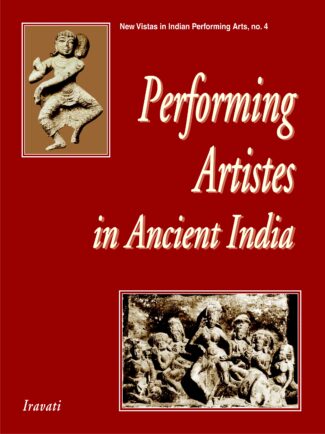
The book studies the evolution of ancient Indian theatre: it deals with the dramatic troupes, abhinaya, the stage and auditorium and visuals depicting scenes etched on temples and caves. It examines the kinds of performing artistes and their contributions.
Theatre in ancient India or natya incorporated various aspects of art and different branches of knowledge in its very definition not only histrionics but also dance, music and fine arts and branches of learning like history, philosophy and science. This work traces the evolution of the ancient Indian theatre, focusing on the contributions of the performing artistes. This scholarly treatise deals at length with aspects of dramatic performance like nature, kinds and members of dramatic troupes, abhinaya, the stage and auditorium, incorporating a number of visuals to depict the dramatic scenes etched by artists on pillars, temple walls, caves and objects. It classifies the different kinds and levels of performers: actors like Sailusa, Sailalin, Mankh Kusilava, Nata and Bharata, and actresses like professional actresses, courtesan actresses, divine actresses and so on. It refers to Natyasastra and other noted works on dramaturgy and their authors, and gives examples and illustrations from the famous epics, Buddhist and Jain literature and other works like the Arthasastra to throw light on values associated with drama and its actual performance in ancient times. The book, presenting well-researched facts and giving an insightful analysis, will prove useful to researchers and teachers of classical Indian art.

This book a collection of papers on Indian history deals with Greek historians, the Indian epic and Puranic tradition of historiography, cultural expansion of the Aryans, the society, trade and commerce in ancient India; and its contacts with other parts of Asia. The volume has analysed in detail Indias War of Independence 1857.
The volume is a collection of papers on certain aspects of Indian history, historiography and culture. The papers are fundamental, insightful and path-breaking to some extent. Combining literary, archaeological, scientific and other perspectives, they cover a range of subjects stretching from ancient to modern India. The volume deals with the Greek historians, the Indian epic and Puranic tradition of historiography, colonial and cultural expansion of the Aryans, the early history of north-west India, society, trade and commerce in ancient India, economic, political and cultural contacts of India with other parts of Asia in ancient and medieval periods, and the 1857 War of Independence in India. It takes up some very interesting and new subjects like role of Brahmanas in the anti-Alexander movement in north-west India and the concept of national integration in ancient India. It explores the sources of history of Uttar Pradesh and the antiquity of Ayodhya and historicity of Rama in an interesting study.
The volume will be of immense use to historians and scholars of philosophy.

This volume seeks to address the gap among various schools of thought about the origin of the Sanskrit language and the Indian civilization by proposing a possible resolution that results from a symposium of experts held at the University of Massachusetts USA. Accordingly the volume presents a balanced view of the seemingly intractable issues.
The earliest Indian inscriptions date from the third century before Christ. Arch-aeological and palaeo-anthropological evidence, as well as the Indian oral tradition, consistently point to the continuity of the Indian Civilization back to a much earlier date. However, the question of the origin of Indian Civilization prior to that period remains open. There are three main schools of thought in this regard. Proponents of the Indo-European theory suggest that the Sanskrit language and civilization were an intrusion into India from the West. Proponents of the continuity theory, on the contrary, believe that they arose locally. The third school of thought proposes that the current scholarship is insufficient to trace the Sanskrit language and civilization back to pre-historical times, and that further research is required to develop a fair comparison between the European languages and the Indian languages. Published literature in the field often reflects one or the other of these perspectives, rather than offering an integrated view.
This volume seeks to address this gap, by proposing a possible resolution to this seemingly intractable issue. It results from a symposium held at the University of MassachusettsDartmouth in July 2011, with invited scholars representing each of the various camps. During the seminar it became apparent that these different traditions are actually much closer to one another than what is usually believed. Accordingly, this is an essential volume for scholars seeking a balanced view on the quest for the origin of the Indian languages and civilization.
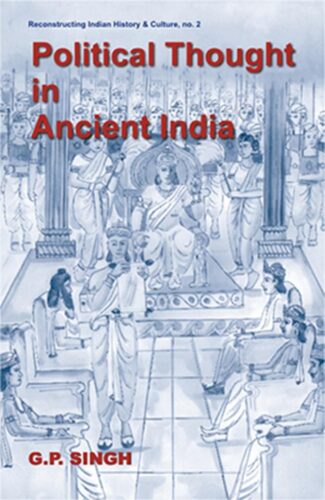
Professor G.P. Singh tries to crystallize the political thought-processes accompanying the evolution of state in the bygone centuries. He dwells on the time-honoured components of the Saptanga theory and their role in supporting the state.
Ancient Indians were a highly organized polity, with a well-established worldview of the Rajya (the State). And also of its seven distinct organs: svamin (the king), amatyas (the ministers), janapada/rashtra (the territory and the people), durgas/pura (the forts/capital), kosha (the treasury), danda/bala (the army), and mitra tatha niti (the allies and inter-state relations). In their togetherness, these components of the state led political ideologues to advance the Theory of Saptanga : the seven limbs each of which admitted varying emphases with ancient scholars, according to the changing political situations or their own predilections. Besides traditional/semi-historical writings, the Saptanga Theory of State finds recurring allusions in Kautilyas Arthashastra which, written sometime about the fourth century BC, remains the oldest surviving treatise of its kind on statecraft. Surprisingly, the Arthashastra itself, claims its author, is a compendium of the writings of as many as eighteen ancient teachers, like Manu, Brihaspati, Ushana, Bharadvaja, Vishalaksha, Prachetas, and Pishuna. With bit-by-bit analysis of an astonishing mass of original, indigenous sources: Vedic, puranic, epical, Buddhist, Jaina, and even non-Indian, Professor G.P. Singh tries to crystallize the political thought processes accompanying the evolution of state through the bygone centuries. Bringing fresh insights into the Saptanga Theory, his study dwells, at length, on all its seven time-honoured components and their variegated roles in lending support to the state. Also underscored here is the relevance of ancient Indian view to modern theories of politics and diplomacy. A thoroughly documented work of equal utility to scholars and students, the monograph is supplemented by a comprehensive index and a glossary of non-English words/ phrases used in the text.
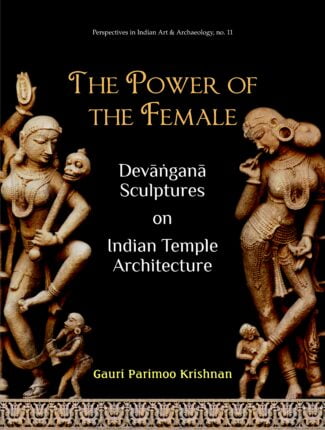
Sculptures of numerous engaging devanganas the surasundari, apsaras and alasakanya figures decorate walls, ceilings and doorways of classical structures in India. The book offers dynamic meanings of these figures in religious and cultural consciousness of India and how they symbolize and illustrate the power of the female in Indian traditions.
This book is an offering to New Art History taking the study of Indian classical sculptural art and traditional Indian iconography to newer heights of interpretation. Sculptures of female figures in classical Indian architectural traditions have enjoyed a special placement and significance. Numerous engaging images of devanganas the surasundari, apsaras and alasakanya figures decorate walls, ceilings and doorways of Hindu temples in India. Viewing the devangana sculptures as a continuation of the yaksi sculptures of Buddhist and Jaina monuments and the concept of primordial mother goddesses of the Vedic times, this challenging work on the devangana sculptures studies the morphology, iconology and semiotic meanings of the devangana figures and their placement in monuments of Gujarat, Rajasthan and Madhya Pradesh between the eighth and twelfth centuries ce.
In a path-breaking effort, the work focuses not on the much-discussed erotic and sexual connotations but explores their dynamic meanings in the religious and cultural consciousness which help to symbolise ßthe power of the femaleû in representational artistic traditions of India. For this, copious architectural and religious texts are examined. With more than 250 illustrations of temple sites and detailed sculptures, this book enquires into the imagery of these figures. A significant aspect of the research is its critiquing of the existing literature on the subject to come up with novel viewpoints and use of tools like dhvani theory, psychoanalysis and feminism to interpret the devangana sculptures.
The book will benefit young researchers, cultural enthusiasts and erudite scholars of Indian art and architecture focused on religious and cultural significance of Indias sculptural heritage.
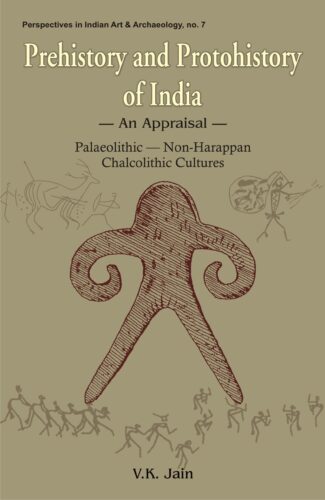
This monograph presents, in a concise but comprehensive manner, a syncretic view of the latest information on various aspects such as tools and technologies, settlement and subsistence patterns, ecological background and distributional configuration in respect of the Stone Age and the Chalcolithic Cultures outside the Harappan Zone. The Megalithic Cultures of peninsular India and the Deccan too find a place in the book
Fresh excavations, new dating techniques and ever-growing conceptual frameworks since 1950 have greatly reshaped our perspective on Prehistory and Protohistory of the Indian subcontinent. This monograph, which is primarily aimed to serve as a starter for the undergraduate and postgraduate students, presents, in a concise but comprehensive manner, a syncretic view of the latest information on various aspects such as tools and technologies, settlement and subsistence patterns, ecological background and distributional configuration in respect of the Stone Age and the Chalcolithic Cultures outside the Harappan Zone. The Megalithic Cultures of peninsular India and the Deccan too find a place in the book. A glossary of the terms used frequently in archaeology as well as maps, line-drawings and explanatory notes on individual sites add further value to the text.

This monograph presents, in a concise but comprehensive manner, a syncretic view of the latest information on various aspects such as tools and technologies, settlement and subsistence patterns, ecological background and distributional configuration in respect of the Stone Age and the Chalcolithic Cultures outside the Harappan Zone. The Megalithic Cultures of peninsular India and the Deccan too find a place in the book
Fresh excavations, new dating techniques and ever-growing conceptual frameworks since 1950 have greatly reshaped our perspective on Prehistory and Protohistory of the Indian subcontinent. This monograph, which is primarily aimed to serve as a starter for the undergraduate and postgraduate students, presents, in a concise but comprehensive manner, a syncretic view of the latest information on various aspects such as tools and technologies, settlement and subsistence patterns, ecological background and distributional configuration in respect of the Stone Age and the Chalcolithic Cultures outside the Harappan Zone. The Megalithic Cultures of peninsular India and the Deccan too find a place in the book. A glossary of the terms used frequently in archaeology as well as maps, line-drawings and explanatory notes on individual sites add further value to the text.
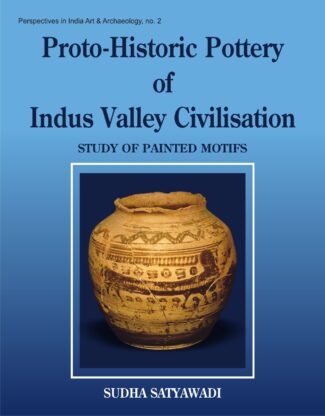
Dr. Satyawadis book is the first-ever study of painted pottery motifs of the Indian subcontinent (earliest times to 1750 BC). It explores the genesis and development of popular forms and classifies art motifs into their different genres.
In the 1920s was found one of the worlds oldest, most mysterious civilizations: the Indus Valley. Which, in view of the relatively more recent archaeological evidence, could possibly have evolved from a much older, indigenous culture: of about nine millennia ago some 6000 years before the growth of Mesopotamian urbanism or about 2000 years before the Egyptians. Among a variety of excavated material remains, pottery affords a significant clue that influences archaeologists conclusions. Despite many a scholars avowed fascination for the pottery of the Indian subcontinent since John Marshalls days, Dr. Satyawadis book becomes the first-ever, exclusive study of its art motifs: from the earliest times to 1750 bc Marshalling a whole diversity of painted-pottery motifs: from potsherds, from excavatory reports, and from as many as twenty archaeological museums of India, it explores the genesis of popular themes/forms and how they developed from their most primitive character to mature Harappan period with sharp focus on their creative purpose, stylistic/formal variants and their spatial-temporal parameters. Also surveying extensively the painted pottery of Indus Valley: of both pre- and post-Harappan cultures, the author painstakingly classifies art motifs into their different genres: religious, ritualistic, decorative, superstitious, and personal. And into their different forms too, like geometrical, floral, faunal, other. In her effort to probe the beginnings of pre-Harappan pottery motifs, the artist in Dr. Satyawadi visualizes their continuity not only in mature Harappan cultures, but even in contemporary folk and tribal art of India: almost in their pristine, primitive form keeping alive, from generation to generation, an insistent, inherently powerful tradition, despite the ravages of time. The author also tries to trace the linkages between the painted motifs (on pottery) of Indus Valley and other old-world cultures, notably, Mesopotamian, Egyptian, Afghan, Iranian, and Baluchi. With one hundred thirty six photographic reproductions, this study is supplemented by over 650 line-drawings which, (all beautifully copied by the author herself straight from museum exhibits), try to capture the panorama of protohistoric art motifs in their essential variety and pristine splendour.

भारतीय पुरातत्त्व परिषद्, नई दिल्ली, के द्वारा प्रकाशित पुरातत्त्व िवज्ञान से सम्बन्धित ‘पुराप्रवाह’ नामक वार्षिक पत्रिका देश में यू॰जी॰सी॰ से मान्यता प्राप्त अकेली हिन्दी की सारगर्भित शोधपत्रिका है जो पुरातत्त्व के विषयाें तथा ऐतिहासिक शोधकार्याें से सम्बन्ध रखती है।
यह वार्षिक पत्रिका विद्वत समीक्षक मण्डल द्वारा अवलोकित होती है तथा इस पत्रिका में प्रकाशित हाेने से पूर्व आलेख काे वरिष्ठ पुरातत्त्ववेत्ताओं एवं उस विषय के विशेषज्ञों को विचारार्थ स्वीकार करने हेतु भेजा जाता है।
इस पत्रिका का प्रकाशन मूलतः राजभाषा व राष्ट्रभाषा हिंदी में पुरातत्त्व के साहित्य को मान्यता देने हेतु एक सार्थक व सशक्त माध्यम है तािक देश की युवा पीढ़ी के पुरातत्त्वज्ञों को अन्वेषणपरक शोध-निबन्धों के लेखन काे िहन्दी में िलखने की प्रेरणा िमल सके। इससे आने वाले समय में पाठकांे के पास पुरातत्त्व सम्बन्धित हिन्दी की सामग्री पर्याप्त रूप से होगी, जो विद्यार्थियों को शोधकार्य करने में अत्यंत सहायक िसद्ध होगी और उन्हें अंग्रेज़ी की पत्रिकाओं एवं पुस्तकों पर निर्भर नहीं रहना पड़ेगा।
‘पुराप्रवाह’ में पुरातत्त्व विज्ञान, इतिहास, अभिलेखिकी, मुद्राशास्त्र, पुरातात्त्विक अन्वेषण, प्रागैतिहासिक युग से सम्बन्धित सामग्री, भारतीय संस्कृति, कला और साहित्य का पुरातत्त्व से अन्यान्योश्रय सामंजस्य जैसे विषयों को समाहित करने का प्रयत्न किया है। इसके अतिरिक्त इस वार्षिक पत्रिका में संग्रहालय-विज्ञान, प्राचीन भारतीय धरोहर, वेद-पुराणों से सम्बद्ध महागाथाओं तथा परम्परागत लोकगाथाओं के लेख भी समािहत करने का प्रावधान रखा गया है।
हमें आशा और विश्वास है कि यह शोध-पत्रिका शीघ्र ही पुरातात्त्विक जगत् में अपनी पहचान बना लेगी।
भारतीय पुरातत्त्व परिषद्, नई दिल्ली, के द्वारा प्रकाशित पुरातत्त्व िवज्ञान से सम्बन्धित ‘पुराप्रवाह’ नामक वार्षिक पत्रिका देश में यू॰जी॰सी॰ से मान्यता प्राप्त अकेली हिन्दी की सारगर्भित शोधपत्रिका है जो पुरातत्त्व के विषयाें तथा ऐतिहासिक शोधकार्याें से सम्बन्ध रखती है।
यह वार्षिक पत्रिका विद्वत समीक्षक मण्डल द्वारा अवलोकित होती है तथा इस पत्रिका में प्रकाशित हाेने से पूर्व आलेख काे वरिष्ठ पुरातत्त्ववेत्ताओं एवं उस विषय के विशेषज्ञों को विचारार्थ स्वीकार करने हेतु भेजा जाता है।
इस पत्रिका का प्रकाशन मूलतः राजभाषा व राष्ट्रभाषा हिंदी में पुरातत्त्व के साहित्य को मान्यता देने हेतु एक सार्थक व सशक्त माध्यम है तािक देश की युवा पीढ़ी के पुरातत्त्वज्ञों को अन्वेषणपरक शोध-निबन्धों के लेखन काे िहन्दी में िलखने की प्रेरणा िमल सके। इससे आने वाले समय में पाठकांे के पास पुरातत्त्व सम्बन्धित हिन्दी की सामग्री पर्याप्त रूप से होगी, जो विद्यार्थियों को शोधकार्य करने में अत्यंत सहायक िसद्ध होगी और उन्हें अंग्रेज़ी की पत्रिकाओं एवं पुस्तकों पर निर्भर नहीं रहना पड़ेगा।
‘पुराप्रवाह’ में पुरातत्त्व विज्ञान, इतिहास, अभिलेखिकी, मुद्राशास्त्र, पुरातात्त्विक अन्वेषण, प्रागैतिहासिक युग से सम्बन्धित सामग्री, भारतीय संस्कृति, कला और साहित्य का पुरातत्त्व से अन्यान्योश्रय सामंजस्य जैसे विषयों को समाहित करने का प्रयत्न किया है। इसके अतिरिक्त इस वार्षिक पत्रिका में संग्रहालय-विज्ञान, प्राचीन भारतीय धरोहर, वेद-पुराणों से सम्बद्ध महागाथाओं तथा परम्परागत लोकगाथाओं के लेख भी समािहत करने का प्रावधान रखा गया है।
हमें आशा और विश्वास है कि यह शोध-पत्रिका शीघ्र ही पुरातात्त्विक जगत् में अपनी पहचान बना लेगी।

भारतीय पुरातत्त्व परिषद्, नई दिल्ली, के द्वारा प्रकाशित पुरातत्त्व िवज्ञान से सम्बन्धित ‘पुराप्रवाह’ नामक वार्षिक पत्रिका देश में यू॰जी॰सी॰ से मान्यता प्राप्त अकेली हिन्दी की सारगर्भित शोधपत्रिका है जो पुरातत्त्व के विषयाें तथा ऐतिहासिक शोधकार्याें से सम्बन्ध रखती है।
यह वार्षिक पत्रिका विद्वत समीक्षक मण्डल द्वारा अवलोकित होती है तथा इस पत्रिका में प्रकाशित हाेने से पूर्व आलेख काे वरिष्ठ पुरातत्त्ववेत्ताओं एवं उस विषय के विशेषज्ञों को विचारार्थ स्वीकार करने हेतु भेजा जाता है।
इस पत्रिका का प्रकाशन मूलतः राजभाषा व राष्ट्रभाषा हिंदी में पुरातत्त्व के साहित्य को मान्यता देने हेतु एक सार्थक व सशक्त माध्यम है तािक देश की युवा पीढ़ी के पुरातत्त्वज्ञों को अन्वेषणपरक शोध-निबन्धों के लेखन काे िहन्दी में िलखने की प्रेरणा िमल सके। इससे आने वाले समय में पाठकांे के पास पुरातत्त्व सम्बन्धित हिन्दी की सामग्री पर्याप्त रूप से होगी, जो विद्यार्थियों को शोधकार्य करने में अत्यंत सहायक िसद्ध होगी और उन्हें अंग्रेज़ी की पत्रिकाओं एवं पुस्तकों पर निर्भर नहीं रहना पड़ेगा।
‘पुराप्रवाह’ में पुरातत्त्व विज्ञान, इतिहास, अभिलेखिकी, मुद्राशास्त्र, पुरातात्त्विक अन्वेषण, प्रागैतिहासिक युग से सम्बन्धित सामग्री, भारतीय संस्कृति, कला और साहित्य का पुरातत्त्व से अन्यान्योश्रय सामंजस्य जैसे विषयों को समाहित करने का प्रयत्न किया है। इसके अतिरिक्त इस वार्षिक पत्रिका में संग्रहालय-विज्ञान, प्राचीन भारतीय धरोहर, वेद-पुराणों से सम्बद्ध महागाथाओं तथा परम्परागत लोकगाथाओं के लेख भी समािहत करने का प्रावधान रखा गया है।
हमें आशा और विश्वास है कि यह शोध-पत्रिका शीघ्र ही पुरातात्त्विक जगत् में अपनी पहचान बना लेगी।
भारतीय पुरातत्त्व परिषद्, नई दिल्ली, के द्वारा प्रकाशित पुरातत्त्व िवज्ञान से सम्बन्धित ‘पुराप्रवाह’ नामक वार्षिक पत्रिका देश में यू॰जी॰सी॰ से मान्यता प्राप्त अकेली हिन्दी की सारगर्भित शोधपत्रिका है जो पुरातत्त्व के विषयाें तथा ऐतिहासिक शोधकार्याें से सम्बन्ध रखती है।
यह वार्षिक पत्रिका विद्वत समीक्षक मण्डल द्वारा अवलोकित होती है तथा इस पत्रिका में प्रकाशित हाेने से पूर्व आलेख काे वरिष्ठ पुरातत्त्ववेत्ताओं एवं उस विषय के विशेषज्ञों को विचारार्थ स्वीकार करने हेतु भेजा जाता है।
इस पत्रिका का प्रकाशन मूलतः राजभाषा व राष्ट्रभाषा हिंदी में पुरातत्त्व के साहित्य को मान्यता देने हेतु एक सार्थक व सशक्त माध्यम है तािक देश की युवा पीढ़ी के पुरातत्त्वज्ञों को अन्वेषणपरक शोध-निबन्धों के लेखन काे िहन्दी में िलखने की प्रेरणा िमल सके। इससे आने वाले समय में पाठकांे के पास पुरातत्त्व सम्बन्धित हिन्दी की सामग्री पर्याप्त रूप से होगी, जो विद्यार्थियों को शोधकार्य करने में अत्यंत सहायक िसद्ध होगी और उन्हें अंग्रेज़ी की पत्रिकाओं एवं पुस्तकों पर निर्भर नहीं रहना पड़ेगा।
‘पुराप्रवाह’ में पुरातत्त्व विज्ञान, इतिहास, अभिलेखिकी, मुद्राशास्त्र, पुरातात्त्विक अन्वेषण, प्रागैतिहासिक युग से सम्बन्धित सामग्री, भारतीय संस्कृति, कला और साहित्य का पुरातत्त्व से अन्यान्योश्रय सामंजस्य जैसे विषयों को समाहित करने का प्रयत्न किया है। इसके अतिरिक्त इस वार्षिक पत्रिका में संग्रहालय-विज्ञान, प्राचीन भारतीय धरोहर, वेद-पुराणों से सम्बद्ध महागाथाओं तथा परम्परागत लोकगाथाओं के लेख भी समािहत करने का प्रावधान रखा गया है।
हमें आशा और विश्वास है कि यह शोध-पत्रिका शीघ्र ही पुरातात्त्विक जगत् में अपनी पहचान बना लेगी।
| There are no products |